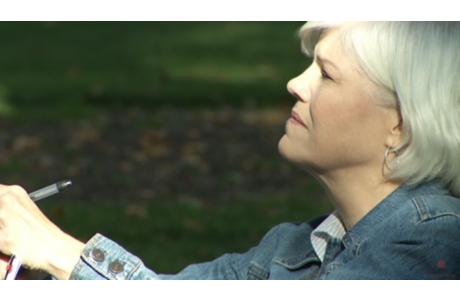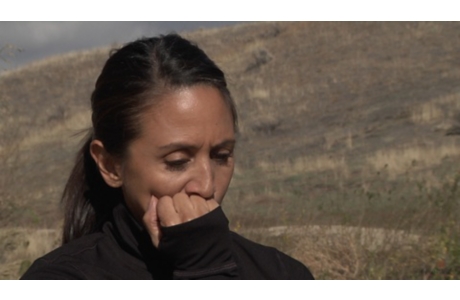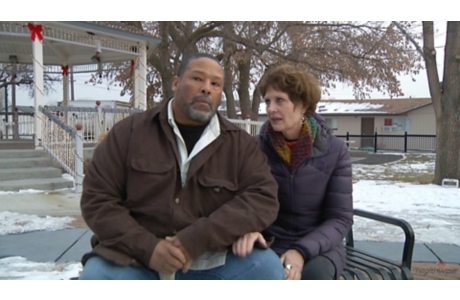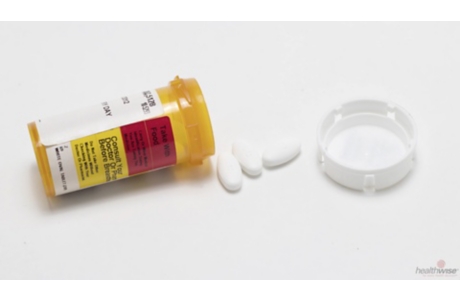Cancer Pain
Overview
Can cancer pain be controlled?
Cancer pain can be controlled in almost every case. This doesn't mean that you have no pain. It means that the pain stays at a level that you can bear. The key to pain control is telling your doctor what your pain feels like and what relieves it for you.
How is it treated?
Pain control often starts with medicine. Both prescription and over-the-counter medicines may be used. Your doctor may suggest different drugs, different combinations, or different doses as your pain changes.
A doctor may use treatments such as radiation or surgery. These treatments can remove, destroy, or shrink a tumor that causes pain. For nerve pain, a doctor may give a shot of numbing medicine near the nerve. Or sometimes medicine is put directly into the spine.
Some people use other treatments along with medical treatments. These include:
- Home treatments, such as heat and cold packs or distraction.
- Complementary therapies. These include acupuncture and meditation.
How can a pain control diary help you and your doctor?
Your doctor needs to understand your pain to treat it effectively. You can help by telling your doctor where you feel pain, what your pain feels like, and what makes it better or worse. It often helps to write everything down. Some people use a pain diary for this.
Health Tools
Health Tools help you make wise health decisions or take action to improve your health.
Cause
Cancer pain may be caused by the cancer or by the treatments and tests used. The kind of pain may vary depending on the cause. The first step in managing cancer pain is understanding the cause.
Pain from the cancer itself can happen when:
- A tumor presses on bones, nerves, or organs.
- A tumor presses on the spinal cord, causing pain in the back, legs, or neck.
- A tumor causes organs to swell or be blocked. For example, a tumor can cause a bowel obstruction.
- Cancer cells spread to the bone and destroy it.
Treatments such as surgery, radiation, and chemotherapy may also cause pain. Cancer treatments have to be strong. As a result, they often cause pain and other side effects. Some medical tests, such as bone marrow aspiration, may cause pain too.
Different Kinds of Pain
The type of pain depends on how cancer or cancer treatment affects your body. Common types include:
- Bone pain.
For example, a tumor that presses on your bones or grows into your bones can cause deep, aching pain.
- Nerve pain.
A tumor that presses on a nerve can cause a burning feeling. Sometimes chemotherapy, radiation, or surgery damages nerves and causes nerve pain.
- Visceral pain.
This is pain that comes from organs. It can be from things like a tumor growing into an organ. It can cause pain that is hard to describe. And it may be hard to figure out where the pain is coming from.
Another type of cancer pain is:
- Phantom pain.
- This is felt in the area where a body part such as an arm or a breast has been removed. Even though the body part is gone, nerve endings at the site still send pain signals to the brain. The brain thinks the body part is still there.
Cancer pain may be:
- Acute.
This is bad pain that lasts a short time.
- Chronic.
This is pain that comes and goes over a long time. Chronic pain can range from mild to severe.
- Breakthrough.
This is severe pain that occurs while you are taking medicines that usually control your pain. Breakthrough pain usually starts suddenly and lasts for a short time.
Learn more
When To Call a Doctor
If you have cancer, call your doctor if:
- You have new pain.
- Your drugs or other treatments are no longer working.
- Your pain medicine is not working long enough after each dose.
- You have new symptoms, such as having a hard time walking, eating, or urinating.
- You notice an unusual rash.
- You have bowel or bladder changes.
- You have unexpected or poorly controlled side effects, such as nausea or vomiting, constipation, or diarrhea.
- Your pain makes it hard for you to do your daily activities, such as eating or sleeping.
Treatment Overview
There are many ways to treat cancer pain. You may need different combinations of treatments to get the best results.
- Pain medicines.
Pain control often starts with medicine. Both prescription and over-the-counter medicines may be used. Your doctor may suggest different drugs, different combinations, or different doses as your pain changes.
- Over-the-counter pain relievers include acetaminophen and anti-inflammatory medicines like ibuprofen.
- There are many prescription options. Examples include steroid medicines and opioid pain relievers.
- Treatments other than medicines.
You may have other options when medicines are not enough to relieve your pain. These include:
- Treatments for painful tumors, such as surgery, chemotherapy, or hormone therapy.
- Treatments for nerve pain, such as surgery or nerve blocks.
- Nonmedical treatments.
There are other treatments that can help you manage cancer pain. They are often used along with medicines or other medical treatments.
Some examples include:
- Cognitive behavioral therapy.
- Complementary therapies, such as acupuncture and meditation.
Discuss the pros and cons of these treatments with your doctor before you try them.
- Home treatments.
Home treatments may reduce cancer pain and help you feel better. Talk to your doctor about any home treatments you want to try.
Things you can try at home to relieve cancer pain include:
- Heat and cold packs.
- Gentle massage.
- Distraction.
Palliative care
Palliative care is a type of care for people who have a serious illness. It's different from care to cure your illness, called curative treatment. Palliative care provides an extra layer of support that can improve your quality of life—not just in your body, but also in your mind and spirit. Sometimes palliative care is combined with curative treatment.
The kind of care you get depends on what you need. Your goals guide your care. You can get both palliative care and care to treat your illness. You don't have to choose one or the other.
Palliative care can help you manage symptoms, pain, or side effects from treatment. It may help you and those close to you better understand your illness, talk more openly about your feelings, or decide what treatment you want or don't want. It can also help you communicate better with your doctors, nurses, family, and friends.
Learn more
Keeping a Pain Control Diary
Your doctor needs to understand your pain to treat it effectively. The more specific you can be about your pain, the better. It often helps to write everything down. Some people use a pain diary for this.
You can help by telling your doctor:
- Exactly where you feel pain. Is the pain just in one place? Is it in several places at the same time? Or is it moving from one place to another?
- What your pain feels like. Use words such as dull, aching, sharp, shooting, or burning.
- When your pain started and how long it has lasted.
- How bad it is on a scale of 0 to 10, with 10 being the worst pain you can imagine.
- If the pain is constant or if it comes and goes.
- What makes your pain better or worse.
- About any changes in your pain.
Learn more
Self-Care
Home treatment may help to reduce cancer pain and improve your physical and mental well-being. Be sure to talk to your doctor about any home treatment you may use.
Here are some things you can try at home to relieve cancer pain.
Heat and cold
Heat and cold treatments can help with mild to moderate pain from cancer. Heat may relieve sore muscles. Cold may ease pain by numbing pain sensations. Try alternating heat and cold. After a heat or cold treatment, try some gentle massage for relaxation and pain relief.
Talk to your doctor before you try either heat or cold during chemotherapy or radiation treatments.
Be careful when using heat or cold treatment.
- Don't apply heat or cold to skin that may be red or tender from radiation treatment.
- Don't apply heat to an area where the skin is broken or injured. Heat can increase bleeding.
- Don't apply heat or cold packs directly to bare skin. Put a thin towel or pillowcase between the pack and your skin.
- Don't use heat or cold in an area where the skin is numb or where you have poor blood flow.
Gentle massage
Simple touch or gentle massage may help reduce pain and ease tension. You could ask someone else to rub your shoulders or back. You can massage your own feet, hands, or neck. Self-massage works best if you are in comfortable clothes and are sitting or lying in a comfortable position. Use oil or lotion to massage bare skin.
Avoid massage in any areas where you have visible tumors, open wounds, skin that is tender from radiation, or a blood clot in a vein.
Distraction
Distraction can help you focus your attention on something other than pain. Paying attention to something other than pain may make the pain easier to handle. Distraction can be useful whenever you are waiting for pain medicines to start working.
Physical activity
Physical activity can help reduce pain and fatigue. It can also prevent muscle spasms and stiffness in your joints. Stretching and range-of-motion exercises can help you stay strong, flexible, and mobile.
Being physically active also can help with your emotional and mental health. It may be hard to be active when you don't feel well. But if you are able, going for a walk or a swim may help you feel better, especially during cancer treatment.
Be sure to talk to your doctor before you increase your level of physical activity.
Coping with your emotions
When you have cancer, you may have a lot of different feelings, like anger, sadness, and fear. And your feelings can change from day to day, and even moment to moment. Most people who have cancer deal with feelings like this.
Although it may be hard at first, look for things each day that help you find a new sense of purpose and meaning. You may find that you appreciate even more things in your life like family or good friends. Keep looking for small things that help you feel at peace. Here are some examples of things that may help you cope with your emotions. Maybe you'll see one or two ideas you'd like to try.
- Start a journal.
Writing about things that bother you may help you deal with your feelings.
- Let your feelings out.
Talk, laugh, cry, and express anger when you need to.
- Get support.
You can find support from the people around you. Your friends, family, a counselor, a support group, or a spiritual adviser can help you.
If you think you are depressed, talk to your doctor about getting treatment. Treatment can help you to feel better and focus on taking good care of yourself.
- Exercise.
Walking and other activities, such as yoga, tai chi, or qi gong, can help release pent-up emotions.
- Try guided imagery.
This means using your imagination to take you to a calm, peaceful place. Imagining yourself in a peaceful setting can help you relax and ease stress. You can do guided imagery on your own. Or you can do it with audio recordings, an instructor, or scripts to lead you through the process.
- Do something you enjoy.
Read or work on a hobby.
- Practice gratitude.
Being thankful is linked to well-being. It can boost the inner strength that helps you bounce back. It shifts your attention to the positive things in your life. It can help you appreciate what's important to you.
Learn more
Watch
Medicines
Many different medicines are used to treat cancer pain. Over-the-counter medicines may relieve your pain at times. But you may need stronger medicines that your doctor prescribes. These may be used alone or with other medicines.
- Over-the-counter pain relievers.
These include:
- Acetaminophen, such as Tylenol.
- Anti-inflammatory medicines, such as ibuprofen.
Talk with your doctor before you take these medicines. Don't take more than the label says unless your doctor tells you to.
- Prescription medicines.
These include:
- Anti-inflammatory medicines and steroid medicines.
- Medicines to treat bone pain.
- Opioid pain relievers.
- Antidepressants. They can relieve pain and help you sleep.
- Certain seizure medicines. They help control nerve pain.
These medicines may be stronger or work differently than over-the-counter medicines. Be sure to follow your doctor's instructions when you take these medicines.
Some may work better than others. It depends on the type of pain you have.
Learn more
Watch
Other Medical Treatments
Many medical treatments can be used to manage cancer pain. Other treatments may help when medicines are not enough to relieve pain or when medicines cause unpleasant side effects.
Treatments for painful tumors
These include:
- Surgery.
A doctor may remove a tumor that is pressing on nerves, bones, or your spinal cord.
- Chemotherapy, hormone therapy, or immunotherapy.
These treatments may shrink a tumor.
- Radiation.
It can destroy cancer growths and relieve pressure on organs and nerves.
- Radiofrequency ablation.
This treatment uses heat to destroy a tumor.
Treatments for nerve pain
These include:
- Surgery.
A doctor may cut the nerves that relay pain.
- Nerve blocks.
A medicine is injected near a nerve. This prevents the nerve from relaying pain. In some cases, numbing the nerve may not only reduce the pain but also lower the amount of pain medicine you need.
- Medicine delivered to the spine.
This may be spinal anesthesia, which puts pain medicine directly into the spine. Or it may be an epidural, which sends pain medicine to the nerves around the spine.
- Transcutaneous electric nerve stimulation (TENS).
This uses mild electrical current from a power pack to relieve pain. Current is delivered through electrodes placed on the skin near the source of pain.
Learn more
Complementary Treatment
Some people use other treatments along with medical treatment to relieve symptoms and help them cope with cancer pain.
Cognitive behavioral therapy may help you manage cancer pain or the pain from cancer treatments.
Integrative practices are helpful for some people with cancer pain. Some examples of these practices include acupuncture, massage, and relaxation exercises. Ask your doctor if you think you might want to try one of these.
Learn more
Related Information
- Bladder Cancer
- Breast Cancer, Metastatic or Recurrent
- Cancer: Controlling Cancer Pain
- Care at the End of Life
- Caregiver Tips
- Cervical Cancer
- Colorectal Cancer
- Endometrial (Uterine) Cancer
- Feeling Depressed
- Hospice Care
- Leukemia
- Lung Cancer
- Non-Hodgkin Lymphoma
- Ovarian Cancer
- Prostate Cancer, Advanced or Metastatic
Credits
Current as of: October 25, 2023
Author: Healthwise Staff
Clinical Review Board
All Healthwise education is reviewed by a team that includes physicians, nurses, advanced practitioners, registered dieticians, and other healthcare professionals.
Current as of: October 25, 2023
Author: Healthwise Staff
Clinical Review Board
All Healthwise education is reviewed by a team that includes physicians, nurses, advanced practitioners, registered dieticians, and other healthcare professionals.













